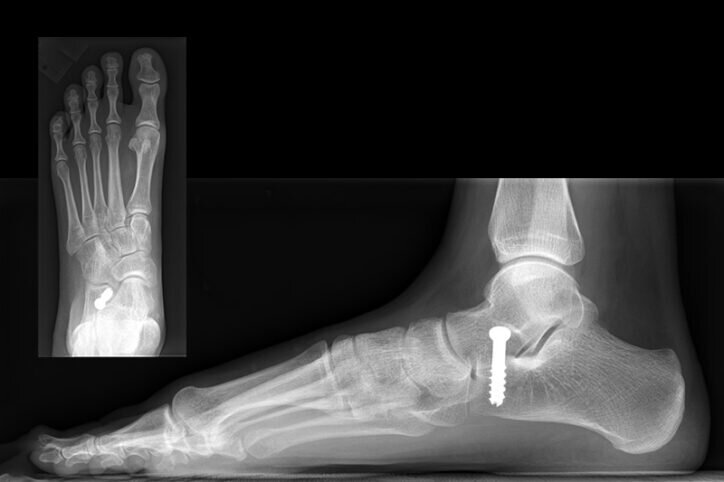Most children develop arches in their feet by early adolescence. About 20 percent, however, have pes planovalgus (PPV), also known as flexible flatfoot.
Most children with PPV can participate in sports and other activities without issue, but others have ongoing pain in their feet that limit function and activities. Until recently in the U.S., children have had two options at extreme ends of the treatment spectrum: conservative treatment or complex foot reconstruction with multiple osteotomies.
“The two options are worlds apart,” says orthopedic surgeon, Susan Mahan, MD, MPH, of the Lower Extremity Program at Boston Children’s Hospital. When PPV limits a child’s mobility, conservative measures, such as stretching and arch support, are often insufficient. Yet, foot reconstruction requires prolonged bed rest followed by six months or longer of recovery. “That’s a lot to recover from, particularly for pre-adolescents or adolescents,” says Mahan.
A less invasive option for flexible flatfoot
A third option that bridges the gap between conservative treatment and foot reconstruction is practiced widely in several European countries—and has been for decades.
Developed in Spain and disseminated most recently in Italy, subtalar extra-articular screw arthroereisis (SESA), also known as calcaneo-stop, is a minimally invasive procedure to correct symptomatic flexible flatfoot without complex foot reconstruction.
During a SESA procedure, a surgeon manually moves the calcaneus into a neutral position and places a single screw through a small incision near the ankle. The screw stabilizes the foot and acts as a mechanical barrier to prevent the bones from returning to a flat position.
After the procedure, young patients feel where the screw impinges and naturally use the small muscles of their foot to create an arch. The ideal age for SESA seems to be about 12, when most children’s feet are close to fully grown, yet their brains remain highly responsive to new stimuli. If a patient needs more aggressive surgery in the future, the SESA screw can be removed without limiting further treatment options.
Studies of SESA in Italy have shown positive results, low complication rates, and high patient satisfaction. Mahan was interested in introducing this option to patients in the U.S. and traveled to Italy in 2018 where she learned the technique from Maurizio De Pellegrin, a surgeon who practices SESA and has played a leading role in disseminating it more widely.
Promising early results and future direction
Mahan and her colleagues reviewed the results of 37 SESA procedures performed at Boston Children’s Hospital between 2018 and 2022. Patients were an average age of 13 at the time of surgery.
Radiological results showed significant improvements with no patient remaining in the symptomatic range after the procedure. Patients also reported a high degree of satisfaction with their arch development, foot function, and general appearance of their foot. Nearly all eventually had both feet treated.
This early study, recently published in the Journal of the Pediatric Orthopaedic Society of North America, was conducted as a proof of concept for the SESA procedure. In follow-up, Mahan and her colleagues conducted a retrospective review (currently in consideration for publication) comparing radiological images of patients’ feet after SESA to those after foot reconstruction. They are also planning a larger prospective evaluation of the procedure.
If results remain positive, Mahan hopes more pediatric lower extremity specialists in North America will take steps to learn and offer this option to their patients. “This minimally invasive approach has allowed many kids to return to activity while avoiding major foot reconstruction,” she says.
More information:
Nicholas Sullivan et al, Subtalar extra-articular screw arthroereisis: Early North American experience in a novel minimally invasive treatment for pediatric pes planovalgus, Journal of the Pediatric Orthopaedic Society of North America (2024). DOI: 10.1016/j.jposna.2024.100014
Citation:
Novel procedure may bridge the treatment gap for symptomatic flexible flatfoot (2024, October 17)
retrieved 17 October 2024
from https://medicalxpress.com/news/2024-10-procedure-bridge-treatment-gap-symptomatic.html
This document is subject to copyright. Apart from any fair dealing for the purpose of private study or research, no
part may be reproduced without the written permission. The content is provided for information purposes only.

